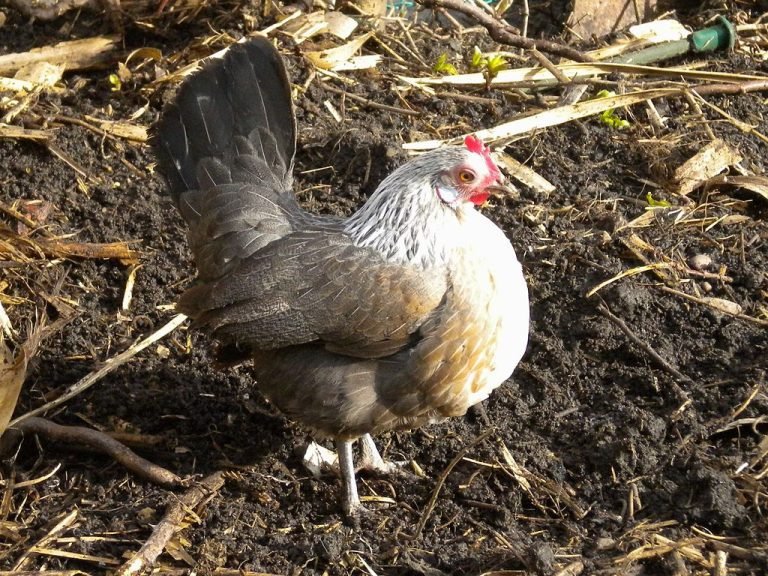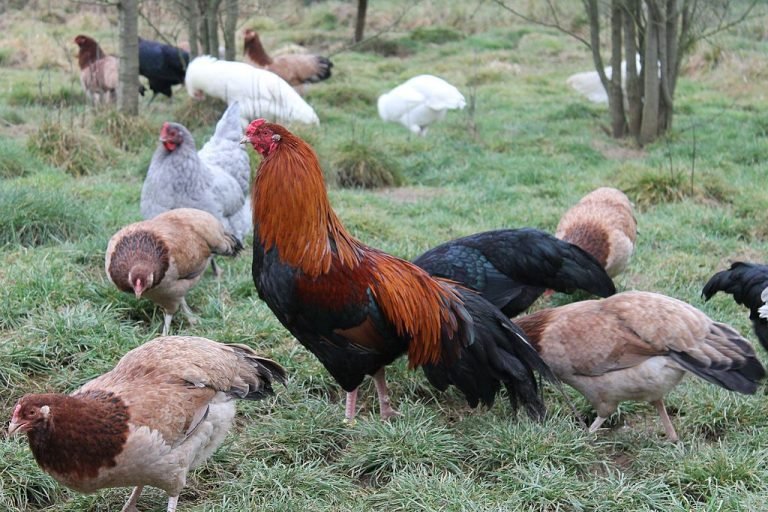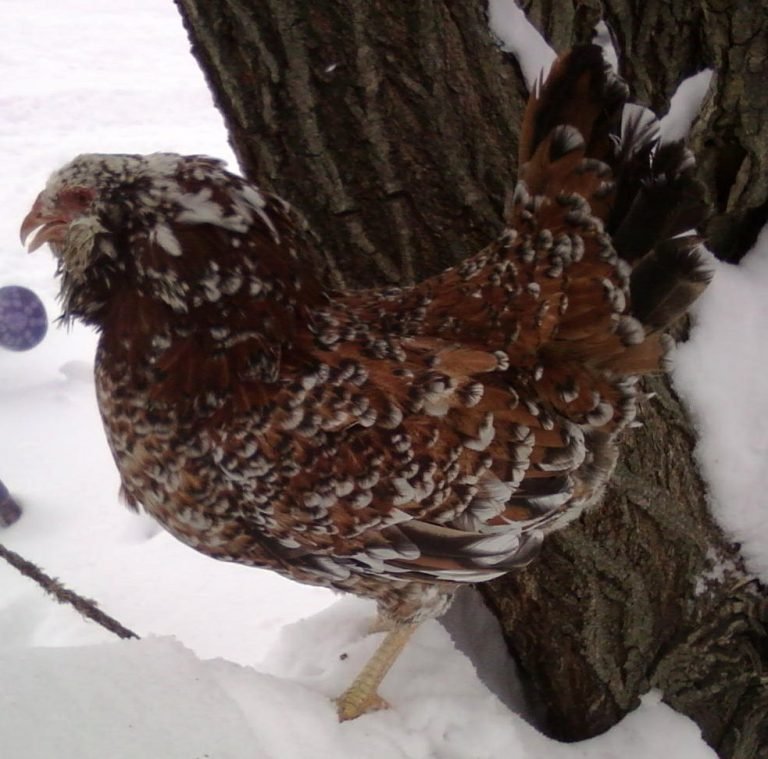Scots Grey Chicken is a robust and hardy breed known for its grey plumage and upright carriage. This ancient breed originated in Scotland and is highly valued for its excellent egg-laying capabilities and meat quality.
With its striking appearance and dual-purpose nature, the Scots Grey Chicken is a popular choice among poultry enthusiasts and homesteaders alike. Keep reading to learn more about the history, characteristics, and care requirements of this fascinating breed.
History
The Scots Grey chicken breed is a fascinating poultry breed with a rich history that dates back several centuries. Known for its unique appearance and hardy nature, this breed has captured the hearts of many chicken enthusiasts. In this section, we will delve into the captivating history of the Scots Grey chicken breed and uncover the characteristics that have made it one of the most beloved breeds among poultry keepers.
Origins: A Breed Rooted In Scotland
- Originated in Scotland during the 19th century
- Developed using a mixture of Dorkings, Malays, and Old English Game fowl
- Bred primarily for their fighting abilities
Resilient And Adaptable: Survivors Against All Odds
- Known for their exceptional hardiness
- Reputed for their ability to withstand harsh weather conditions and thrive in challenging environments
- Their resistance to common poultry diseases makes them suitable for free-range farming
Aesthetics: The Majestic Appearance
- Distinguished by their striking gray plumage and beautiful red combs and wattles
- Sport a strong, muscular build
- Possess a majestic and alert demeanor that adds to their appeal
Endangered Status: Efforts To Preserve The Breed
- The Scots Grey chicken breed has faced a decline in numbers over the years
- Classified as “threatened” on the Livestock Conservancy’s Conservation Priority List
- Various preservation efforts are underway to safeguard and revive this rare breed
Versatile Utility: Not Just For Show
- Scots Grey chickens are renowned for their excellent meat and egg production
- Known for their flavorful and succulent meat
- Lay medium-sized, light-brown eggs consistently throughout the year
The Scots Grey chicken breed has a remarkable history that reflects its strength, resilience, and versatility. Despite its endangered status, this breed continues to captivate poultry enthusiasts with its unique appearance and impressive qualities. Whether you are seeking a hardy breed for free-range farming or simply looking to add a touch of elegance to your flock, the Scots Grey chicken breed is sure to exceed your expectations.

General Characteristics
Scots Grey chickens are a fascinating breed known for their rich history and unique characteristics. This breed has captured the attention of poultry enthusiasts and hobbyists alike. In this section, we will explore the general characteristics of the Scots Grey chicken breed, shedding light on what sets them apart from other chicken breeds.
Appearance
- The Scots Grey is a medium-sized breed with a distinctive appearance.
- They have a well-developed body and are known for their proud stature.
- Their feathers exhibit a striking combination of silver hackles with black and white mottles.
- The tail feathers of Scots Grey chickens are long and flowing, adding to their majestic appearance.
Egg Production
- Scots Grey hens are moderate layers, capable of producing around 150-200 medium-sized eggs per year.
- They start laying eggs at approximately 5-6 months of age, allowing for earlier egg production compared to some other breeds.
- The eggs are light brown in color and are favored for their excellent flavor.
Hardy And Adaptable
- Scots Grey chickens are exceptionally hardy and can thrive in various climates.
- They are well-equipped to withstand harsh weather conditions, making them suitable for a wide range of locations.
- With their adaptable nature, Scots Grey chickens are low-maintenance and easy to care for.
Preservation Status
- The Scots Grey chicken breed is classified as “threatened” by the Livestock Conservancy.
- Efforts are being made to preserve and revive this historically significant breed, ensuring its continued existence for future generations.
- By raising Scots Grey chickens, you contribute to the conservation of this remarkable breed.
Unique Historical Significance
- Scots Grey chickens have a deep-rooted history in Scotland, where they were popular among local farmers.
- They were commonly used as barnyard foragers, able to fend for themselves and provide valuable meat and eggs.
- This breed’s resilience and adaptability made them a mainstay in the Scottish agricultural landscape.
Seeking Out Scots Grey Chickens
- If you’re interested in acquiring Scots Grey chickens, there are various reputable breeders and poultry associations that specialize in this breed.
- Conduct thorough research to find a reliable source that prioritizes breed health and preservation.
- By welcoming these magnificent birds into your flock, you become a part of the movement to preserve this treasured heritage breed.
Scots Grey chickens truly stand out with their distinctive appearance, calm temperament, adaptability, and historical significance. As you delve further into the world of poultry, exploring different breeds, consider the remarkable Scots Grey chicken breed as an enticing addition to your flock.
Temperament
Scots Grey chickens are known for their unique and fascinating temperament. Here are some key points to highlight their distinct behavior:
- Active and energetic: Scots Grey chickens are highly active and love to explore their surroundings. They enjoy free-ranging and thrive in spacious environments that allow them to roam and forage.
- Curious and alert: With their natural curiosity, Scots Grey chickens are always on the lookout for new things and tend to be alert and attentive. They will often investigate any changes to their environment or new objects introduced to their space.
- Independent and self-reliant: These chickens are independent thinkers and are quite self-reliant. They are known for their resourcefulness and adaptability, which makes them capable of finding food and alternatives in various conditions.
- Social but not overly friendly: While Scots Grey chickens enjoy the company of their fellow flock members, they are not overly affectionate towards humans. They generally maintain a more reserved demeanor and might be cautious when approached by people.
- Dominant and confident: Scots Grey chickens have a dominant nature and are confident in their interactions within the flock. They establish their position and tend to assert themselves when necessary.
- Intelligent and quick learners: These chickens are known for their intelligence and are quick learners. They can easily pick up on patterns, routines, and cues, making them well-suited for training and learning new behaviors.
Overall, the temperament of the Scots Grey chicken breed is a fascinating mix of energy, independence, curiosity, and intelligence. While they may not be the most affectionate towards humans, their unique qualities make them an intriguing and engaging breed to keep.
Comb Types
The Scots Grey chicken breed is known for its distinct comb types, which play an important role in their appearance and functionality. There are two main comb types found in Scots Grey chickens:
- Single Comb: The most common comb type seen in Scots Grey chickens is the single comb. This comb type is characterized by a single row of evenly spaced points or teeth. The single comb is upright and stands tall on the chicken’s head. It is important to note that the single comb on Scots Grey chickens is subject to frostbite in colder climates due to its exposed nature.
- Rose Comb: Another comb type seen in Scots Grey chickens is the rose comb. This comb type is a modified single comb with a unique shape resembling the petals of a rose. The rose comb is smaller and broader compared to the single comb. It has a low profile and sits close to the chicken’s head. The rose comb provides better protection against frostbite than the single comb, making it more suitable for colder regions.
Both comb types have their own advantages and considerations. Here are some key points to know about Scots Grey chicken comb types:
- Single Comb:
- Provides good heat dissipation in warm climates.
- Subject to frostbite in colder regions.
- Prone to damage from pecking or fighting due to its exposed nature.
- Rose Comb:
- Offers protection against frostbite in colder environments.
- Well-suited for regions with fluctuating temperatures.
- Less susceptible to pecking damage due to its lower profile.
Comb types not only contribute to a chicken’s appearance but also have functional implications. It is essential to consider your climate and the specific needs of your flock when selecting a Scots Grey chicken with a particular comb type.
Remember, the comb plays an important role in regulating body temperature and protecting the chicken from external elements. So, choose the comb type that best suits your specific requirements and the local climate to ensure the health and well-being of your Scots Grey chickens.
Conclusion
To sum it up, the Scots Grey chicken breed is a remarkable choice for any poultry enthusiast. Its unique characteristics, including its striking appearance and resilient nature, make it a standout among other breeds. With their rich history in Scotland and the ability to adapt well to various climates, Scots Grey chickens are versatile and can thrive in different farming environments.
Whether you are a novice or an experienced breeder, these chickens are relatively easy to care for and maintain. Additionally, their excellent meat and egg quality add to their appeal. So, if you are looking for a breed that not only captures attention but also produces delicious eggs and flavorful meat, the Scots Grey breed should definitely be on your radar.
Consider adding these exceptional birds to your flock and experience the joy of raising and owning this unique and captivating chicken breed.






